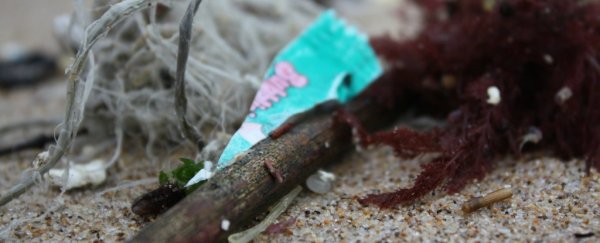We use plastic for pretty much everything nowadays, but where does it all go when we throw it away? In a word: everywhere. Plastic's inability to naturally degrade means that nearly every bit that's ever created is still somewhere in the world. This means our plastic products are either hidden away in a landfill or floating somewhere in the oceans, despite our efforts to recycle.
While landfills are one thing, ocean pollution is constantly killing off fish and other creatures that are vital to the ecosystem. Since plastic isn't going anywhere soon, the only real option is to find a successful system that can battle the rampant pollution before it overwhelms our marine environments, and two students are leading the charge, by optimising a strain of plastic-eating bacteria.
The students, Miranda Wang and Jeanny Yao, who attended the Magee Secondary School in Vancouver, Canada together before heading to separate universities, have developed a process that uses a solvent that first dissolves plastics then breaks them down further with enzymes. The compounds that are left can be easily digested by bacteria, reports Ben Schiller for Fast Company.
The two developed the bacteria, which specifically eats phthalate, a prominent chemical in plastic, in their senior year of high school by analysing bacteria found in a river near their homes.
"Although we're not the first ones to find that bacteria can break down phthalates, we were the first ones to look into our local river and find a possible solution to a local problem," Yao said at a TED Talk back in 2013. "We have not only shown that bacteria can be the solution to plastic pollution, but that also being open to uncertain outcomes and taking risks create opportunities for unexpected discoveries."
Elsewhere in the world, scientists are developing similar solutions the world's plastic problem. A team from Kyoto University in Japan announced earlier this year that they've discovered a whole new species of bacteria that can feast on plastic compounds.
And bacteria aren't the only plastic eaters - researchers from Stanford University teamed up with Beihang University in China back in 2015 to study how mealworms can safely eat Styrofoam and plastic.
The next step is for Wang and Yao to find a great way to implement their discovery to make it easy for crews to use it to clean up the environment. Right now, the best bet, according to Yang, is to develop a giant bio-digester that can live on a truck or a ship. Crews could then load the digester with plastic waste where it will degrade.
"The idea is there's no need to collect the plastic and ship it to some centralised location," Wang said in Schiller's report. "This plastic is very lightweight, so transporting even 1 kilogram of it would take a huge amount of volume and be very unsustainable in terms of transportation."
To make this a reality, the two have launched their own company called BioCellection. This company will hopefully make the mobile digester tanks needed to utilise the bacteria in the field. Each one will cost around $20,000 - a small price to pay to protect the oceans.
The team is hoping to start field testing next year.
